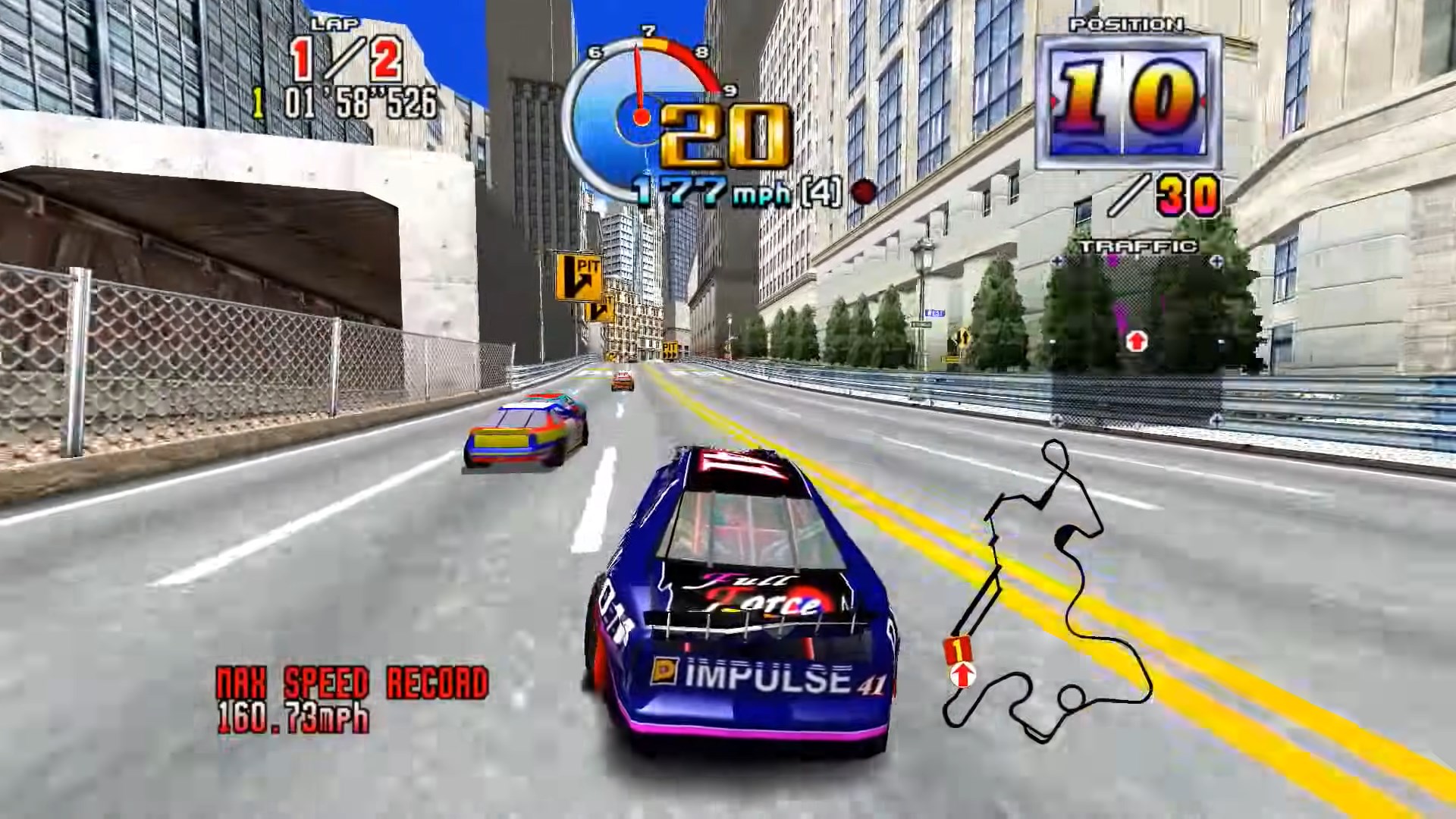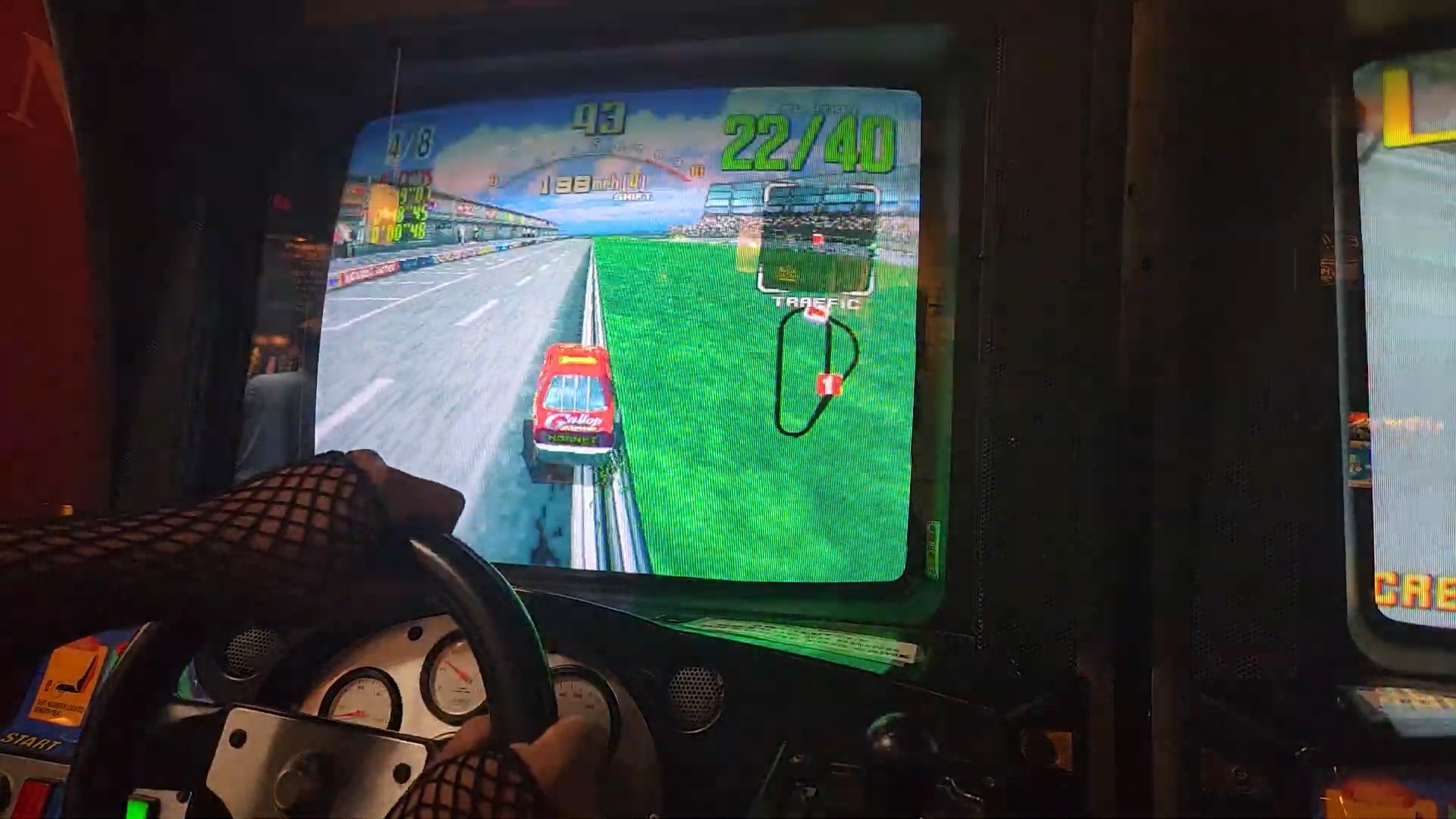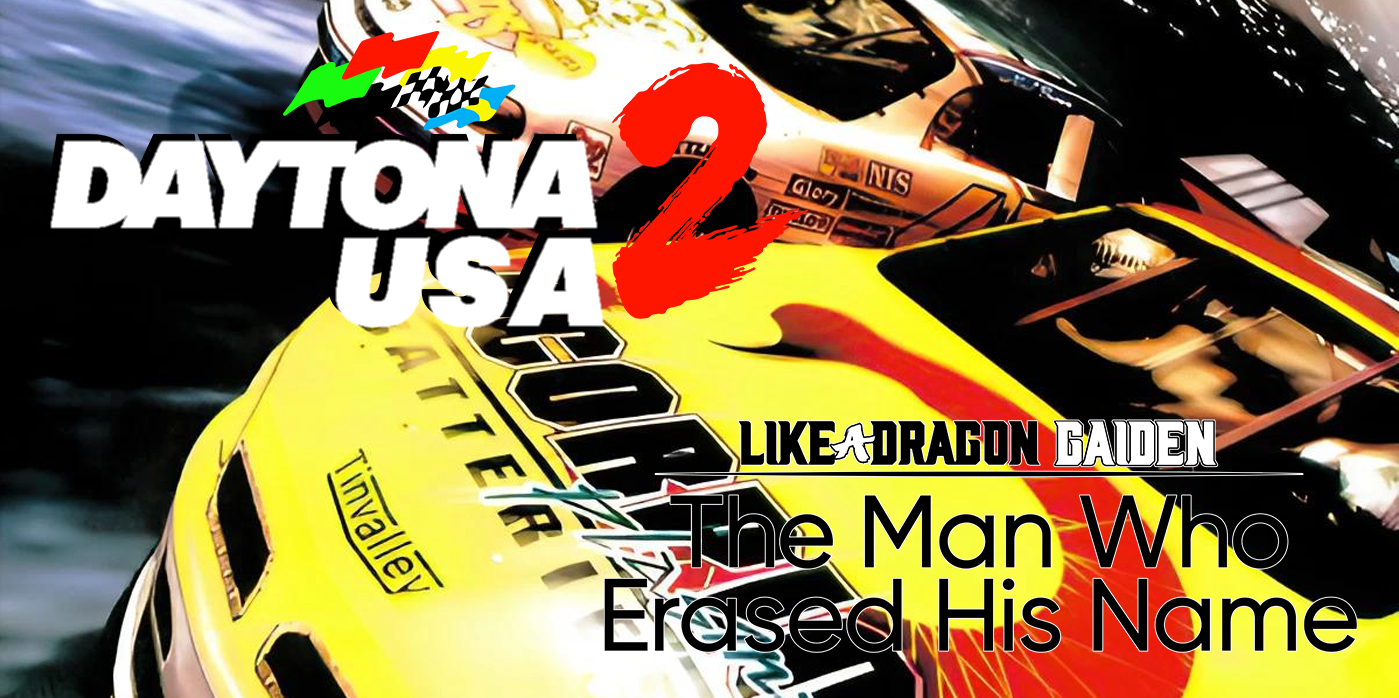After twenty-five years, Daytona USA 2 finally receives a home port, ending the lack of a Naomi-era Daytona USA outside of the arcades. Previously I discussed Daytona USA 2001, a Dreamcast exclusive remake of the original Daytona USA built from the ground up. In collaboration with Genki, Toshihiro Nagoshi helped produce this late 90s racer without involvement from the rest of the Sega AM2 developmental team. They had previously worked on Daytona USA 2, a direct sequel to the original, in which Nagoshi also had involvement as a producer.
The legacy that Amusement Vision left behind as they came into their own as RGG Studio played a massive role in immortalizing Sega's relevancy in the arcades. Relevancy that, for almost thirty years, continues to affect fans of the original 1994 Daytona USA. When news on Like A Dragon Gaiden: The Man Who Erased His Name surfaced from Famitsu magazine, the list of arcade titles that players can expect to play within Like A Dragon was revealed. Fighting Vipers 2 was the first and Sega Racing Classic 2 was the second.
Wait, Sega Racing Classic 2? I thought you said Daytona USA 2. What gives? It's a similar story to my coverage of the now-delisted Daytona USA Online. During the same time, Sega released Sega Racing Classic, which was Daytona USA without the "Daytona" licensing. Similarly, OutRun was recently re-released with the removal of all Ferrari licensing, despite the car being an unbadged Tessarossa now. Sega Racing Classic 2 was a recreation of Daytona USA 2: Power Edition, an updated version of the original Daytona USA 2. Considering RGG Studio's penchant for creating arcade-perfect remakes in their titles, it's safe to assume fans of the series are in for a treat.
Unfortunately, while I don't have a Daytona USA 2 cabinet near me, I do have access to an original Daytona USA machine, which is the point of this article as seen in the info box above. While I did review the Xbox Live Arcade version, playing the original 1994 release on an original arcade cabinet is a unique experience. A large reason for the game's success was how accurate it was to driving a stock car. Three decades later, I hadn't felt a more visceral experience in driving an arcade racer aside from Sega GT / SCUD Race. While the chances of that game being remade in Like A Dragon are slim to none due to the licensing reasons I mentioned above, here's why Daytona USA 2 is great news.
The original Daytona USA featured a 4-Gear H-Shifter, a contrast to the original Ridge Racer and its usage of a sequential shifter. This made certain maneuvers possible in Daytona USA that simply wasn't possible for Namco's rival racer. Automatic transmission is also a valid option as I find that I rely more on braking than throttle control. To truly enjoy this game, however, you must learn manual transmission as it makes power sliding far easier. Not only is it cool to pull off in the arcade, but it also forces you to adjust to a line at the fastest speed rather than slowing down and carrying onward.

To give an example of the differences between automatic and manual transmission techniques, let's look at the Beginner course. It's a simple three-corner speedway that can be taken at full throttle. Daytona USA even encourages the player to go fast as it's the only course in the game with a rolling start. However, the infamous "Mount Sonic" corner is different from the other two corners in that taking it at top speed will cause the poor Hornet to ram into the wall at worst, or wall ride at "best."
In automatic transmission, the best way to go about it is to brake well before the corner, let go of the throttle, ease into the turn, and then slowly give into the gas as you control your angle. Manual transmission is a bit different as depending on the gear you enter a turn, the Hornet's drifting angle will change dramatically. Shifting from 4th to 2nd while turning sharply will force Hornet into a 45-degree angle that can be micro-adjusted with good steering control. The lower the car's gear, the narrower the angle, which is great for handling tighter corners. Shifting up while turning will widen the angle conversely, which is required to straighten the car.
Mastering manual transmission in any Daytona USA game is a challenge and it isn't because the Hornet is difficult to control. I find the force feedback in this game to be some of the best as it manages to do the impossible. Sega racing games like these, especially the ones Yu Suzuki and Toshihiro Nagoshi worked on, felt like a simulator with obvious dramatic arcade physics. There is a tremendous response and a weighted feel in controlling the Hornet, almost as if you are behind the wheel of a 200+ miles per hour monster machine.
But wait, there's more! The Advanced and Expert courses add another layer of challenge because now the player needs to learn how to cold start. If you want to have a remote chance of going for a time attack, you have to learn how to properly lift your car from neutral. As I'm still learning, I still can't quite get the hang of the "rocket start," but you hold the brake and feather the throttle until the speedometer is between 6k and 7k RPMs. The moment the green light appears, you let go of the brake and floor it. If done correctly, there should be minimal wheelspin and the player can shift confidently.

The absolute worst-case scenario is successfully achieving the rocket start and catching the rev so you immediately shift into second. The problem is that the timing window is super tight so the player has to be ready for it. Of course, the rocket start can just fail altogether. In this case, in manual transmission, it's all about waiting for the car's wheelspin to finish, and then shift up. Shifting too early will cause the car to lose speed so caution is advised.
There's not much to say about this course except it's one of my favorite tracks in a racing game. Also known as Dinosaur Canyon, this track has it all. Elevation changes, corners you can take at full speed, and a tricky second half that is intimidating at first. However, learning to powerslide in manual transmission is incredibly enjoyable once things start to fall into place. Keep in mind that for sharper angles, you'd wanna shift down to first. For all other corners that can't be taken at full speed, second is best.
Lastly, the Expert course, has my favorite song in the game, Sky High. This course is notoriously difficult because it seems the Sega AM2 team just wanted to fit everything including the kitchen sink. In the beginning, you're treated to the biggest troll of a maze I've seen in a racing game.
A parking garage complex that disguises a very evil sharp right-hander into an S-bend leading to the left. The signature landmark of this track awaits the player in the form of a large memorial statue of Jeffrey from Virtua Fighter. Following the villa and seaside section, the player returns to the other side of the bridge where the second half of the course begins.
After the bridge comes one of the most brutal blind left corners Daytona USA has to offer. I'm aware the harbor hairpin at the end of the track is the "main problem" with this particular course, but the blind corner is infamous. It's very easy to mistake this left turn as a gentle one, but players will need to use the "2-3-4" shifting method as it narrows unless they crash into the wall. Identifying track landmarks is a requirement to clear the race as knowing when to act means the difference between finishing and running out of time.
To this day I have yet to get a podium finish on the Expert course but this serves as a testament to how ahead of their time Sega AM2 and RGG Studio were back then. For a game released in 1994, there are very few that have left a legacy of a visceral realistic arcade experience while breaking all of the rules of professional driving.
There's a reason why drivers like Ross Chastain are rare in motorsport as the maneuver he made at Martinsville last year was coined a "video game move." Despite this, it worked so well for him that NASCAR outright banned the move altogether. Don't forget that the Gran Turismo movie was based on a real-life event of a driver who was originally a racing game fan.
While Daytona USA may not be as realistic of a stock car racer like, say NASCAR Ignition, it's a far better racer despite the hardware being different at the time. Sometimes, being grounded in realism hinders the experience, and games like these are what breed actual drivers. Now, I'm not saying I will be the next Bubba Wallace or someone similar as I purely play these games for enjoyment and as a fan. However, it's thanks to this game's legacy that we finally have Daytona USA 2 on the way, despite it being merely an addition to a larger title.
Expect actual coverage of Daytona USA 2 when Like A Dragon Gaiden releases later this year!

